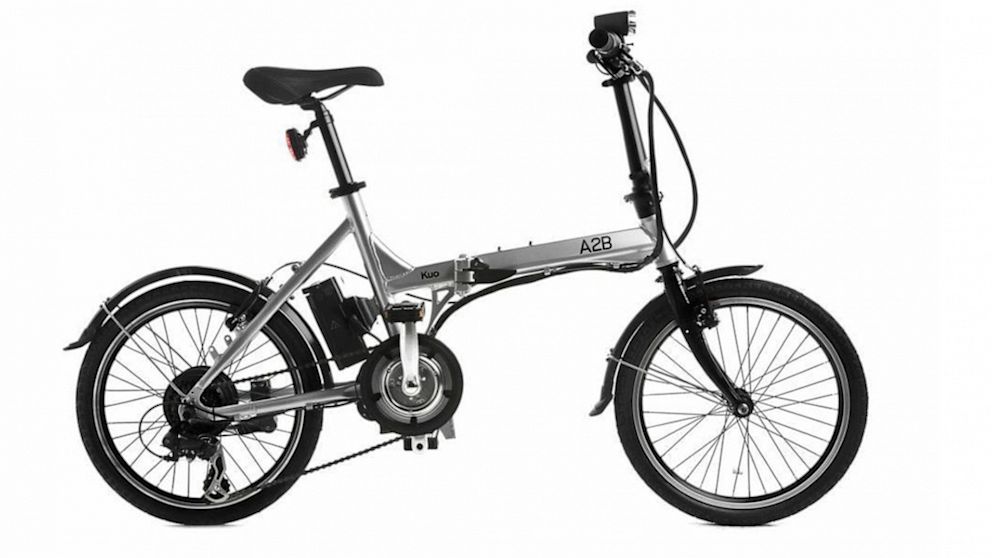A2B Kuo Review: What's It Like Riding an Electric Bike?
Tackling steep roads and steeper price tags.

Aug. 7, 2013 — -- There's still plenty of summer left and the warm temperatures mean it's a great time to get reacquainted with the pleasures of biking. While traditional bikes will have you cruising in no time, a new breed of electric bikes are also angling for a piece of the road.
Unlike traditional bikes, electric bikes have a rechargeable, onboard battery and motor that provide extra oomph for your ride. I recently had the chance to test out A2B's Kuo, an electric bike with a 24-volt battery and 250-watt motor.
One theoretical perk of going electric is the ability to arrive at your destination without breaking a sweat. After all, with a battery-powered motor and on my particular bike, a handlebar throttle, pedaling is almost beside the point. It's way more fun to see how fast you can go on power alone.
For work commuters, electric bikes can also help cut down on the energy expended when you're dressed more for the office and less for serious biking. But depending on how bike-friendly your commute is, the experience won't always be sweat-free.
Riding an electric bike can be startling at first. On a traditional bike, you can cruise at a fairly consistent speed, but with electric bikes, each pedal produces a small burst of speed that pushes the bike suddenly forward. It definitely takes some getting used to.
When you're dealing with steep inclines, the electric boost is a godsend -- no more shaky, quivering thighs as you scale that unforgiving, uphill road. Just hold down the throttle and you're coasting. Navigating everyday traffic though, with its unexpected stops and starts, can prove difficult and even a little scary initially, on an electric bike.
I tested the Kuo on short, one-mile commutes between my apartment and ABC News' offices in New York City. On streets with little traffic, the experience was smooth. It took little effort to keep up with the flow of cars and trucks.
But New York City isn't exactly known for its traffic-free streets, and the stop-and-go nature of more than a few streets made for some nerve-wracking moments. In one instance, I was waiting for a red light to turn green when one small pedal-push forward almost sent me straight into the crosswalk before I was ready.
The bike has three sensitivity settings, to adjust the ratio between your pedaling effort and the resulting bike speed, but that finer sense of control you get on a regular bike is gone here.
On the other hand, covering the car-free, six-mile loop in Central Park was a breeze. The steeper sections of the loop would normally put to rest my hopes of a lazy Sunday ride in the park, but not this time. With a flick of the wrist, I laid on the throttle and cruised past cyclists huffing and puffing their way up the hills.
If it's possible for a bike to make you feel guilty about not working hard enough, electric bikes will do it. Still, I'm not about to argue with getting 18 miles an hour (based on a reading of an attached odometer) when my best effort on a normal bike would have probably garnered something closer to three miles an hour.
Electric bikes can be ridden as normal bikes, but if you want speed, the battery will need to be recharged. On the Kuo this was easy enough, as the lithium-ion battery can be removed from the bike and charged separately if there's not an outlet conveniently located nearby. On average, it should take about four hours and give you a range of 25 miles.




